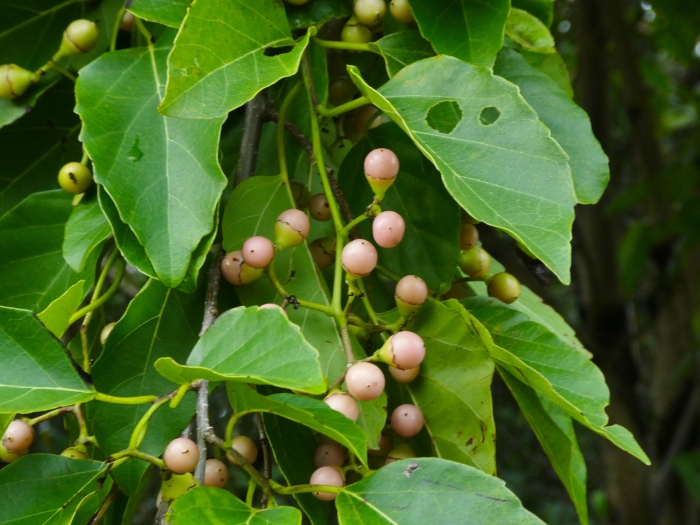Fragrant Manjack
(Cordia dichotoma)
Fragrant Manjack (Cordia dichotoma)
/
/

© Steve Fitzgerald
CC BY-SA 4.0

























Estimated Native Range
Summary
Fragrant manjack is valued for its ornamental flowers, edible fruits, and traditional medicinal uses. It is often used in urban planting, as a roadside tree, and in traditional medicine for treating various ailments. The tree prefers full sun to part shade, well-drained soils, and moderate water, making it relatively easy to maintain. It is drought-tolerant once established. However, gardeners should be aware of its potential invasiveness outside its native range, as it can spread aggressively in suitable climates.CC BY-SA 4.0
Plant Description
- Plant Type: Tree
- Height: 25-50 feet
- Width: 20-35 feet
- Growth Rate: Moderate
- Flower Color: White
- Flowering Season: Spring, Summer
- Leaf Retention: Deciduous
Growth Requirements
- Sun: Full Sun
- Water: Medium
- Drainage: Fast, Medium
Common Uses
Bee Garden, Bird Garden, Butterfly Garden, Edible*Disclaimer: Easyscape's listed plant edibility is for informational use. Always verify the safety and proper identification of any plant before consumption., Low Maintenance
Natural Habitat
Native to tropical and subtropical regions of the Indomalayan realm, northern Australia, and western Melanesia
Other Names
Common Names: Fragrant Manjack , Glue Berry , Indian-Cherry , Sebastian Plum , Clammy-Cherry , Cordia-Tree , Snotty Gobbles , Bird Lime Tree , Pink Cordia
Scientific Names: Cordia dichotoma , Cordia blancoi , Cordia blancoi var. mollis , Cordia brownii , Cordia dichotoma var. brunnea , Cordia evolutior , Cordia grandis , Cordia griffithii , Cordia indica , Cordia ixiocarpa
GBIF Accepted Name: